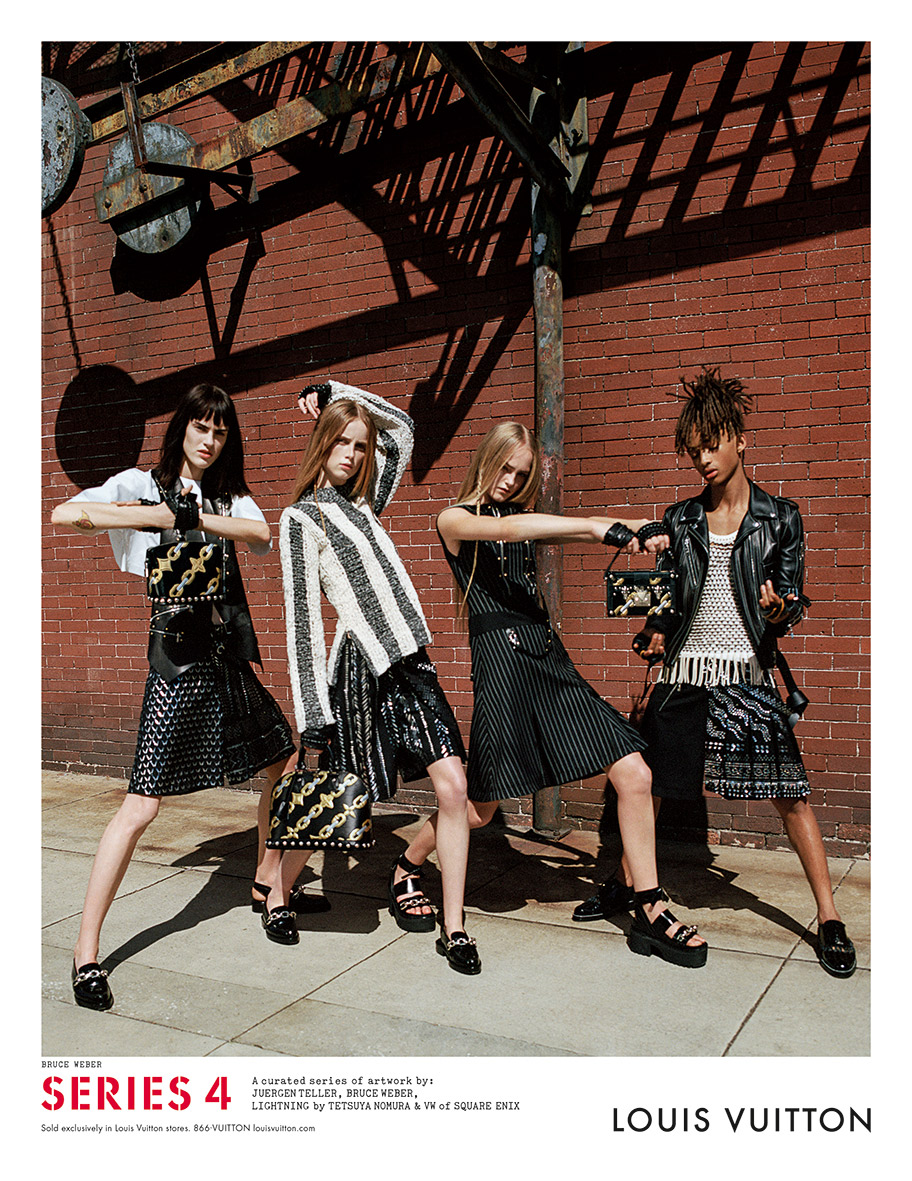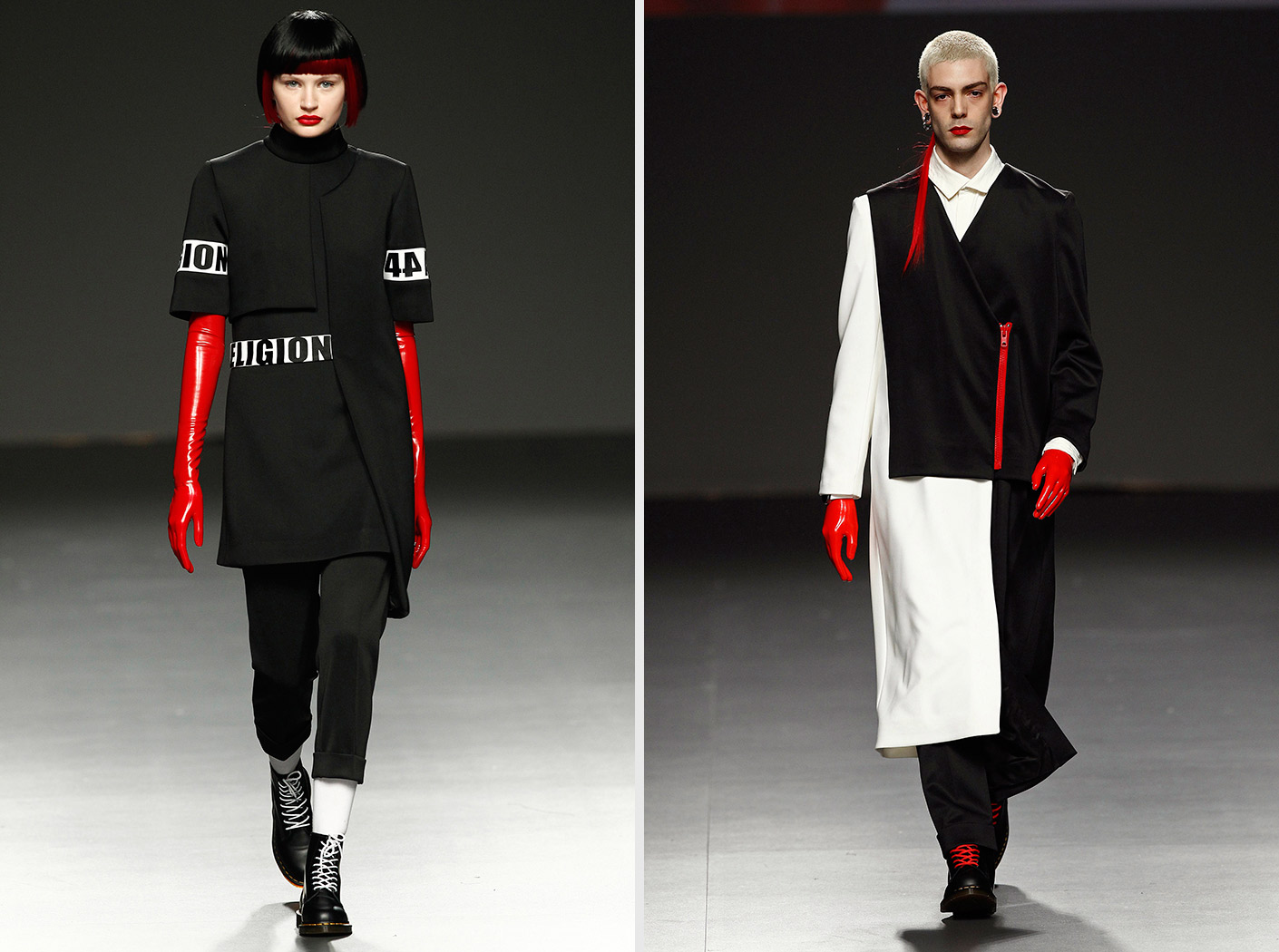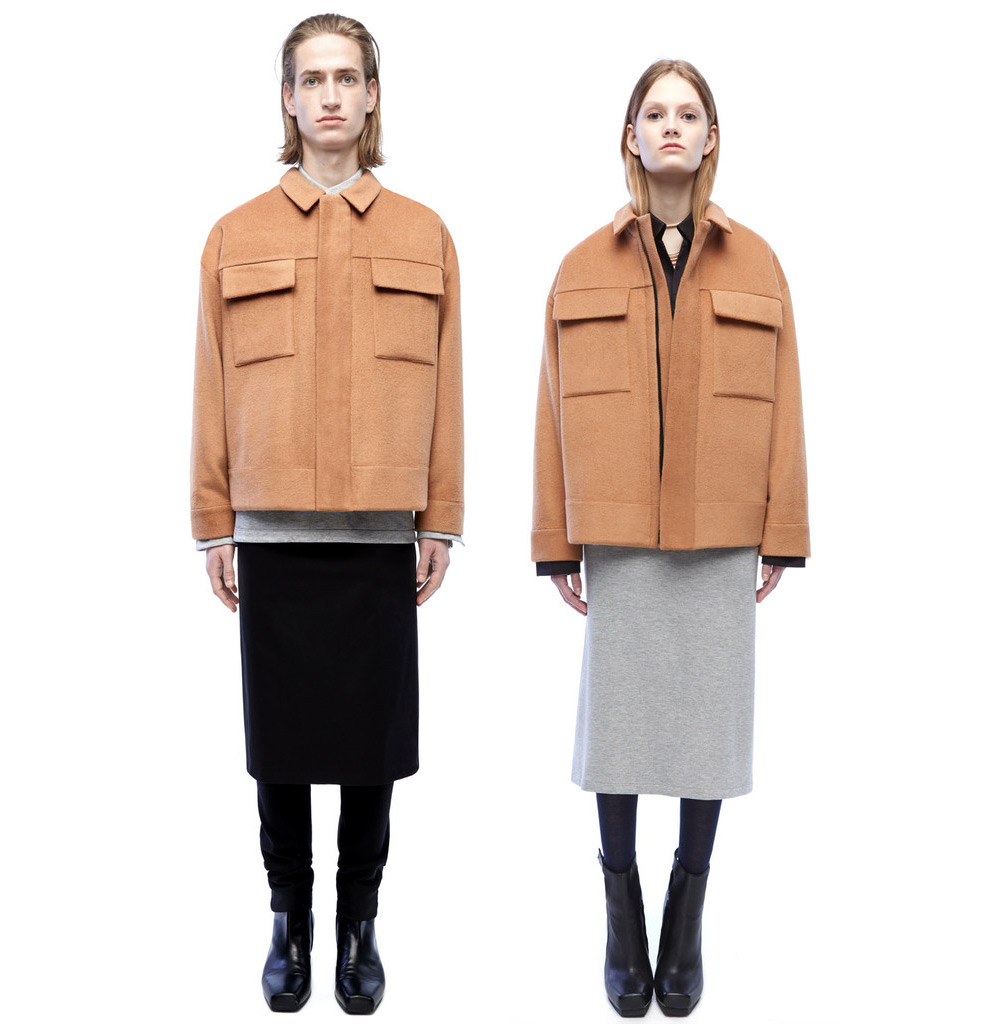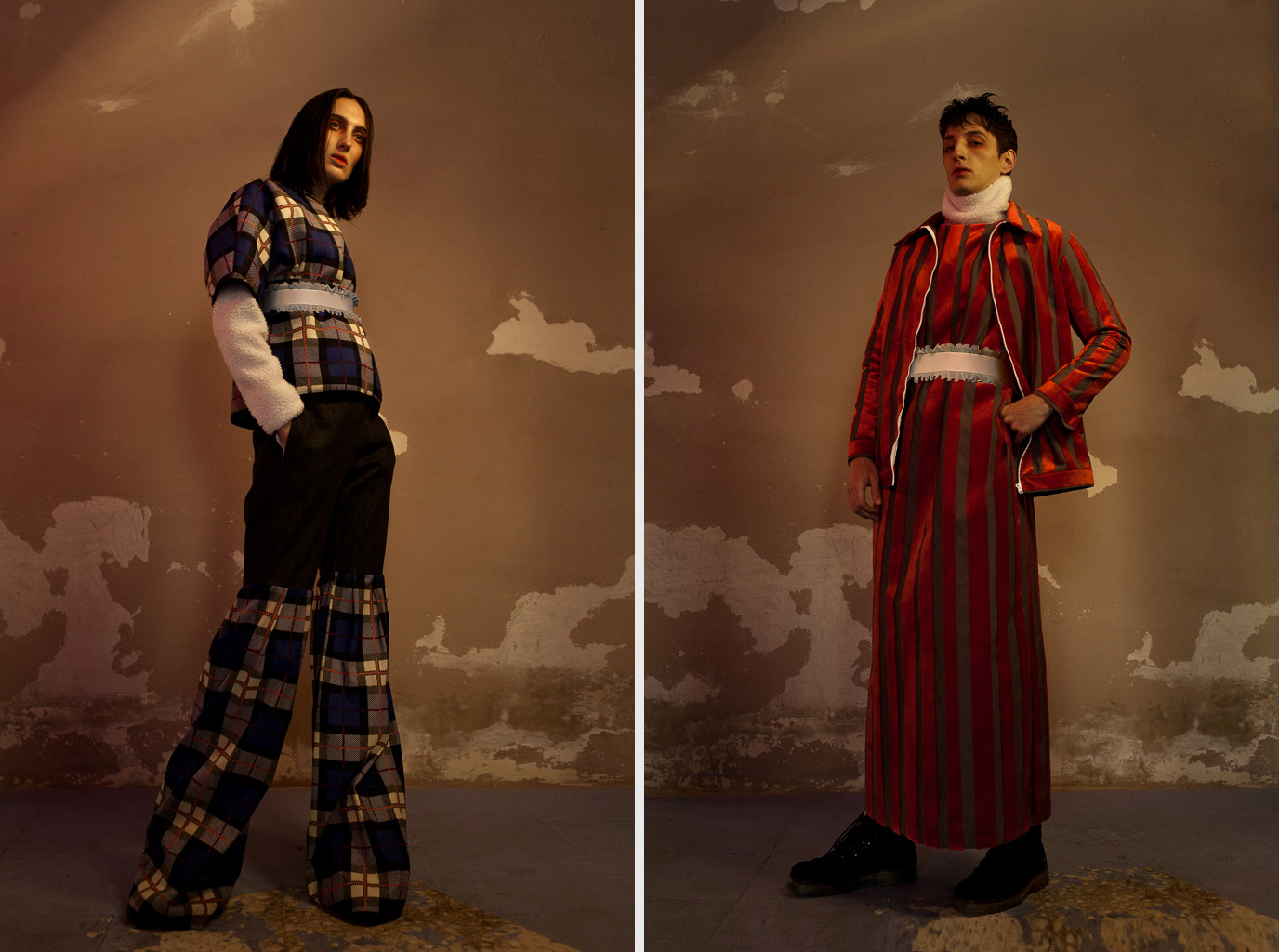2016 is a year marked by gender. Every day we hear new cases of gender violence. Female celebrities are declaring themselves feminists. Men are defending their role as parents. Photos of guys dressed up like Disney princess, struggling for their right to be pampered and sensitive, have become viral on the Internet. What is the role of fashion in this conflict?
The issue of gender has come to a head and our society, in its 21st century, is still a completely unequal society. And yet the world, by nature, doesn’t make as many distinctions. Unless you look at their sexual organs, it’s difficult to distinguish the sex of animals. For instance, when a female clownfish dies, the male alpha undergoes a sex change, becoming female, to ensure the reproduction and survival of the group. Like them, many animals change sex throughout their lives in order to adapt to changes in the environment. Starfish, snails and even some people, are born hermaphrodites. The world has proved to be a place in which the concepts of sex and gender are flexible by nature. So, why then should we build up our society and our fashion around an unnatural distinction of masculine-feminine gender?
Looking at social conventions with perspective, it’s clear that the main function of clothes is to cover our genital organs. Even if you have strong nudist and exhibitionist tendencies, you still have to get dressed to go out to the street. What does seem to be socially agreed upon is that, no matter how minimal your clothing is, out of respect for others, our clothes are what most differentiates us physically. Ironically, fashion has evolved in such a way that, while it conceals the sex, it actually promotes gender. If you are a woman, a garment that suits you, will accentuate your figure, slimming your waist, emphasizing your breasts and your curves. If you are a man, however, the outfit will make you seem taller, or will make your shoulders appear broad and strong. Along these lines, fashion has drawn up two very well-differentiated ideal silhouettes. This is where the conflict comes in; when, after years of evolution, the social roles of men and women start to blur… Without fashion following it.
Some have tried to debunk this gap. Women like Marlene Dietrich, whose ambiguous looks attracted both sexes. Men like Yves Saint Laurent or Marc Jacobs who promoted the use of the tuxedo for her and the dress for him. Androgyny icons like Grace Jones. All of them gave visibility to this conflict between fashion and gender, encouraging others to imitate them and to give it visibility, driving the change. And let’s not underestimate the power that the fashion industry has when launching messages that have a direct impact on the population. It isn’t unreasonable to think that the creation of fashions and looks that are less determined by gender could actually be promoting a more egalitarian society.
The way we dress gives an opinion to the world as to what we’re like and how we perceive ourselves. For years, powerful women like Coco Chanel or Margaret Thatcher have tried to lather themselves in the authority that the typically-masculine garments offer. If we create our fashion so that gender is less important and people are more important, we could propel the society in new directions.
Generalizing
The first woman to wear pants, during the twenties, was a revolutionary. A brave woman followed by many others, generating a change in society. Since then, women have been opening their minds and gaining ground, making basically all clothes that were identified with masculinity their own. The opposite process hasn’t happened yet, perhaps because men aren’t interested in adopting certain feminine pieces nor what they represent.
It wasn’t until the sixties, a moment in which both men and women began to wear jeans, sweaters and long hair, that the term “unisex fashion” began to appear, referring to a type of clothing, very closely linked to the hippy movement, which unified the appearance of both sexes, in an attempt to reinforce equality. Since then, unisex fashion has evolved in two very different mainstreams: genderless and genderful. Two opposite paths that lead to the same point, the freedom to experiment with clothing, regardless of our sex.
Genderless. Classic authors of sociology, like Williams and Best, have stated that stereotypes serve to regulate society. Assigning a particular role to each member of society maintains the status quo, making classification easier while maintaining the traditional structures of power. Rich, poor, elegant, tacky, bohemian, old, young, man or woman. Each individual is labeled correctly making it easier to identify them and assign their role in society. When creating patterns made of simple and minimalist forms that detract from the body’s forms and stereotypes, genderless fashion aims at breaking down these labels on the pretext that a more neutral fashion helps to highlight the personality of the person who wears it. Men and women dress the same way, just like all those people who don’t feel represented by only one of the two traditional genres. It’s a question of enhancing the identity of each person according to the values that define that person, instead of doing so according to the gender stereotypes or other social classifications.
Â
Genderful, on the other hand, is based on the idea that eliminating gender is an error, arguing that the “less” in the word genderless is depressing. Genderful defends the search for personality from dress codes unrelated to what should or should not be sexual identity. Aesthetically, the movement is characterized by highlighting gender stereotypes and applying them to opposite gender, which, in turn, creates a contrast. Genderful asks society a question: What is so wrong about a man wearing a skirt? Who made the rules that we follow? Let’s do away with what the skirt originally represented and let our freedom be based on the ability to wear whatever symbol defines us best, regardless of the gender that it traditionally represented. There is no need to create a blank canvas, unimpressive, or to highlight. It’s actually the opposite. You have to enhance and highlight our dualities.
“Degenderate” Designers
When you take a look at Xavi Reyes’ 2016 Spring Summer collection, the first image you see is that of a man, with his back to you, wearing a long, wide dress, tied at the waist, with a large frill on the bottom. For the designer, the line between masculinity and femininity is fading. “There will always be distinctions, but it’s very interesting to note that the new generations no longer have them.”
Xavi Reyes has been, ever since he started his own label, one of the maximum exponents of fashion without gender in our country. However, the physical differences between the male and female body have pushed him away from unisex fashion, once a starting point of his career as a designer. “Physically, it’s obvious that we are all different, and that fashion is a world directed almost in its entirety to women.” In his latest collection (FW2016), the designer makes it clear which garments are designed for each sex, however, the man is not traditionally male nor is the woman traditionally feminine. The garments show some notions of flexible gender which reflect the creative process of the designer. “Thinking up a garment that is attractive to both sexes is very complicated. I simply prefer to design, and then decide if a guy or a girl will wear it, no matter whether the silhouette be more feminine or masculine.”
Rad Hourani, the first designer to take the unisex concept to a haute couture runway in Paris, proves that a garment with a good pattern can be adapted to different sexual anatomies. In the streets, the shops that give visibility to these garments are no less revolutionary. For instance, we talked to Selfridges, the most powerful and emblematic chain of stores in the United Kingdom, who opened an Agender space at his shop on Oxford Road in London a year ago. In Spain, in Madrid, 44 Store stands out, a space designed for people looking for brands and interesting pieces without stopping to think about whether a garment is for a man or woman. Its creators believe “in a free fashion, without gender or labels that dictate what we have to like because of sexual differences” and highlight how the idea of masculinity has radically changed in fashion throughout history. “Until the 18th century, men’s fashion was richer and more charged. Today it would be considered feminine. Brocades, skirts, capes… until men started to lose their aesthetic quality and ended up with a pair of trousers and a shirt. We’ve always let ourselves get carried away by trends, and the clothing we wear has defined the masculine and the feminine.” Xavi and Frank, the creative minds behind this holistic concept of unisex brand and store, consider it key to set aside the insecurities that lead us to blindly accept the looks that set marketing and advertising campaigns. They also point out the power that fashion has to change global perceptions of gender. “When something is considered fashionable, everything can change. Just look back to what happened with the whole metrosexual thing. Until that moment, it was unthinkable for a man to be more shaved than a woman and the industry sold it as masculine.”
With the great power of influence, and in the wake of all these pioneers, the traditional fashion houses are also starting to open up to gender flexibility. In the current Spring Summer season, we’ve seen the young 17-year-old Jaden Smith star in the female campaign of Louis Vuitton with a skirt and bag, but without giving up his masculinity at any moment. Nicolas Guesquière, creative director of the brand said that for him, “Smith represents a generation, which has assimilated the codes of true freedom. One that is free of expression and questions about gender. The use of a skirt is just as natural to him as it would be for a woman, who long ago granted herself the permission to use a men’s trench coat or a tuxedo.” For him, Jaden Smith, customizes the change and the integration and has become an agent of change capable of creating a new wardrobe.
Regeneration through fashion
The biological and emotional reality of human beings includes a wide range of gender identities. However, every effort is made to create a social structure in a binary manner around the traditional concepts of man and woman. Men’s and women’s sports leagues, the Oscar for best actor or actress, men’s and women’s restrooms, suits and dresses… It’s a division that is applied to everyone, despite the fact that according to the calculations of Doctor Tiger Devore, specialist in intersexuality, one out of every 206 people present gender dualities. There are a million examples and exceptions that make it clear that gender is not divided into 2, nor that they have to be opposites. There is a gray scale that covers the entire diversity of identities. Once this idea is accepted and spread, both society and fashion will advance hand in hand.
We’ve come far enough so that no one is surprised to see Kanye West in a skirt, Delevigne in a tracksuit, or Miley Cyrus naked. But we still confuse sex with gender, sexual orientation with gender identity and feminism with inequality. Let’s move on and make up our own ideal of beauty. Fashion is a powerful tool of expression that we all have within our reach. We use clothes to define ourselves in the eyes of others and to express ourselves. We use it to feel comfortable with ourselves and we don’t have to do so limiting ourselves by the concepts of man and woman, but by our own personality and by the qualities that define each of us as individuals.
————
Above: 44Store FW 16-17 (Photos Estrop / Francesc Tent)
————
 ————
————
Above: Louis Vuitton Serie 4, Campaign SS16 x Bruce Weber
————






